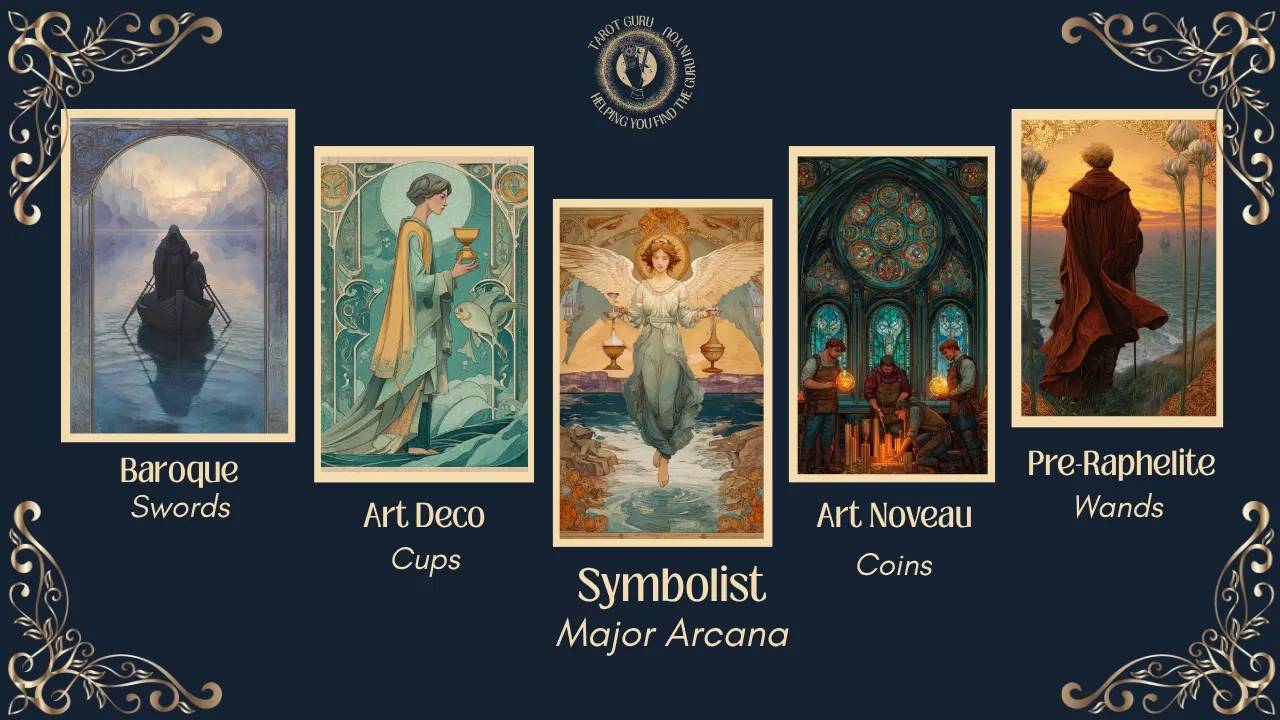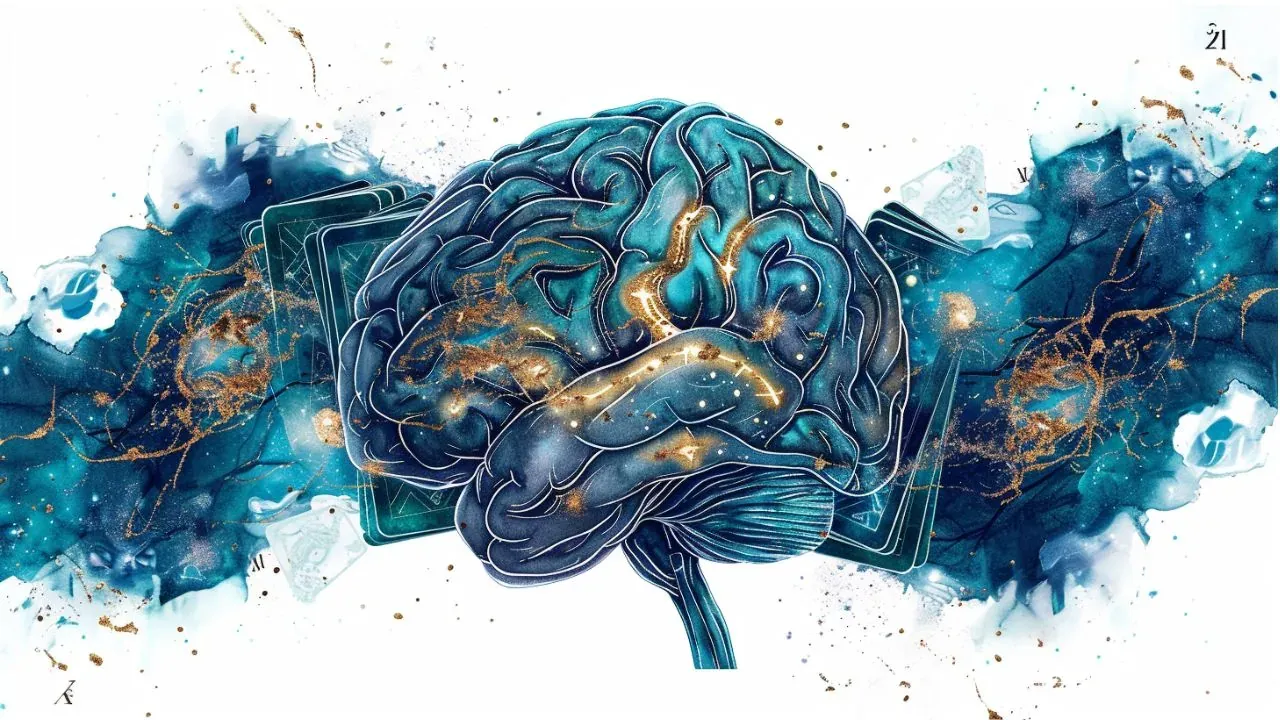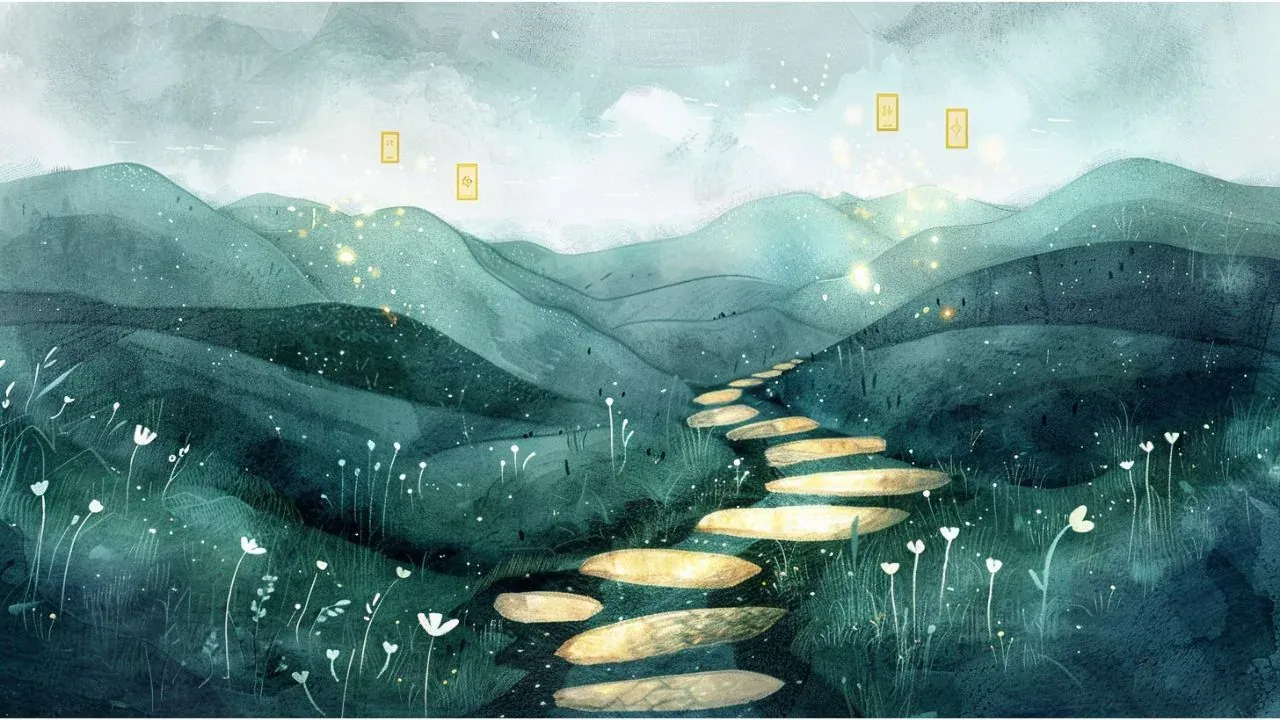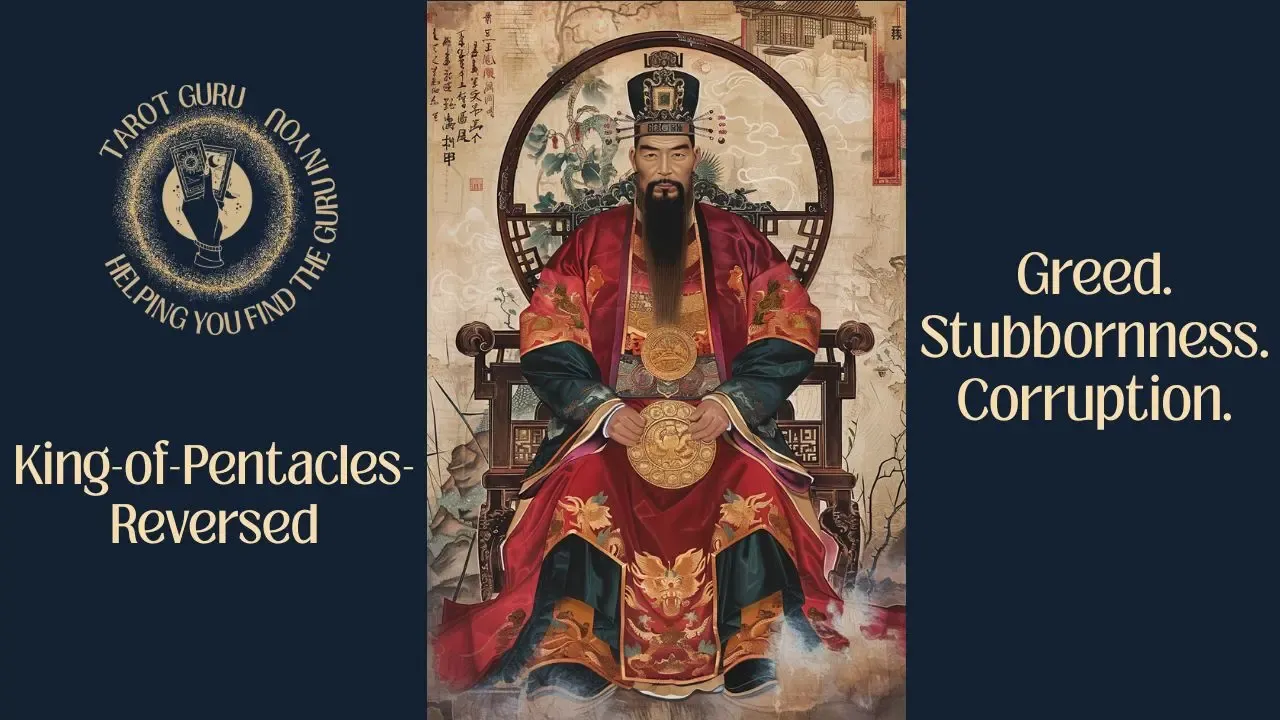The Art Styles Behind the Tarot-guru Tarot Deck

When I set out to create a custom tarot deck, I knew I wanted each suit to feel distinct while maintaining cohesion across all 78 cards. The solution? Matching specific art movements to each suit's elemental energy. Here's the art history that shaped this deck.
Why Art Movements Matter in Tarot Design
Each tarot suit carries its own energy - Pentacles ground us in the material world, Cups flow with emotion, Swords cut through with intellect, and Wands ignite with passion. Rather than using a single art style across the entire deck, I matched each suit to an art movement that embodies its essence.
Art movements don't emerge randomly - they arise from specific cultural moments, philosophical shifts, and artistic innovations. Each movement has its own visual language, its own way of seeing and depicting the world. By aligning these artistic visions with tarot's elemental wisdom, each suit gained a visual identity that reinforces its meaning.
The Major Arcana, representing the spiritual journey and universal archetypes, needed something timeless and mystical - which led me to Symbolist painting.
Pentacles: Art Nouveau's Organic Abundance
For the suit of Pentacles (earth element, material world, prosperity), I chose Art Nouveau, which translates from French as "New Art."
What is Art Nouveau?
Art Nouveau flourished from roughly 1890-1910 across Europe and America. It was a deliberate break from the academic art that came before - instead of rigid classical forms, Art Nouveau artists embraced organic, flowing lines inspired by nature. Think of vine tendrils, flower stems, and the curves of a woman's hair.
This movement appeared everywhere - not just in paintings, but in architecture, furniture, jewelry, and posters. Artists believed beauty should be accessible in everyday life, not confined to museum walls. The style is immediately recognizable: sinuous curves, botanical motifs, decorative elegance, and an emphasis on craftsmanship.
Key Art Nouveau Artists:
Alphonse Mucha (1860-1939) - Czech artist who became synonymous with Art Nouveau through his theatrical posters featuring elegant women surrounded by elaborate floral borders and flowing hair.
Gustav Klimt (1862-1918) - Austrian painter known for his golden, ornate works that combined natural forms with geometric patterns.
Why Art Nouveau for Pentacles:
Pentacles represent the tangible world - money, career, physical health, material success. Art Nouveau's lush botanical imagery reflects earth's abundance and growth. The movement's emphasis on craftsmanship mirrors the patience and skill required to build material prosperity. Those flowing, organic lines ground us in the natural world while the decorative elegance captures the beauty of earthly pleasures done well.
When you pull a Pentacles card, you should feel rooted, abundant, connected to the physical world. Art Nouveau's aesthetic delivers exactly that - beauty that feels touchable, real, grounded.
Explore Art Nouveau: Visit the Mucha Museum Prague virtual collection or browse the Metropolitan Museum's Art Nouveau galleries.
Cups: Art Deco's Geometric Elegance
The Cups suit (water element, emotions, relationships) called for Art Deco, short for Arts Décoratifs.
What is Art Deco?
Art Deco dominated the 1920s and 1930s - the Jazz Age, the era of The Great Gatsby. It emerged after World War I, when society craved glamour, optimism, and modernity. Where Art Nouveau was organic and flowing, Art Deco was geometric and streamlined. Think of the Chrysler Building in New York, elegant cocktail dresses, and luxury ocean liners.
Art Deco celebrated symmetry, bold geometric patterns, rich colors, and luxurious materials like gold, chrome, and exotic woods. It was modern without being cold, elegant without being stuffy. The style represented progress, sophistication, and a belief in a bright future.
Key Art Deco Artists:
Erté (1892-1990) - Russian-born French artist known for theatrical costume and set designs featuring elongated figures, dramatic poses, and geometric elegance.
Tamara de Lempicka (1898-1980) - Polish painter who captured the glamorous spirit of the 1920s with sleek, stylized portraits combining cubist angles with Art Deco polish.
Why Art Deco for Cups:
Cups govern our emotional lives - love, intuition, relationships, the inner world of feelings. Art Deco's symmetrical compositions reflect the balance we seek in relationships. Those jewel tones and metallic accents evoke the depth and richness of emotional experience. The geometric patterns create structure for flowing emotions - think of how water needs a container to hold it.
Art Deco's marriage of elegance and emotion captures something essential about the Cups suit: our feelings deserve to be honored with beauty and attention. Emotions aren't messy chaos - they're sophisticated internal landscapes worthy of respect.
Explore Art Deco: The Victoria and Albert Museum has extensive Art Deco collections, or visit the Cooper Hewitt Smithsonian Design Museum virtual galleries.
Swords: Renaissance and Baroque Drama
For Swords (air element, intellect, conflict), I turned to Renaissance and Baroque painting - specifically the dramatic chiaroscuro technique pioneered by Caravaggio.
What is Renaissance and Baroque Art?
The Renaissance (roughly 1400-1600) marked a rebirth of classical learning and artistic innovation in Europe. Artists rediscovered perspective, anatomy, and realistic representation. But it's the later Baroque period (roughly 1600-1750) that provided the perfect energy for Swords.
Baroque art is theatrical, emotional, and dramatic. Caravaggio (1571-1610) revolutionized painting with his chiaroscuro technique - using stark contrasts of light and shadow to create intensity and focus. In a Baroque painting, light doesn't just illuminate - it reveals truth, creates meaning, and directs your eye exactly where the artist wants it.
Baroque compositions feel alive with movement and tension. Nothing is calm or static. Every element serves the drama.
Key Renaissance/Baroque Artists:
Caravaggio (1571-1610) - Italian master whose revolutionary use of light and shadow influenced centuries of artists. His paintings feel like spotlit theater.
Rembrandt van Rijn (1606-1669) - Dutch painter who used light to reveal psychological depth and emotional truth.
Artemisia Gentileschi (1593-1656) - Italian Baroque painter known for powerful, dramatic biblical and mythological scenes with strong female protagonists.
Why Renaissance/Baroque for Swords:
Swords represent the realm of thought - intellect, logic, conflict, difficult truths, mental clarity, and sometimes painful honesty. The intense light and shadow of Baroque painting mirrors how our minds work - moments of brilliant clarity followed by confusion, truth emerging from darkness.
The dramatic compositions capture the conflict inherent in the Swords suit. These aren't easy cards - they deal with loss, struggle, hard decisions, and mental challenges. Baroque art doesn't shy away from intensity. It leans into the drama, just like Swords force us to face difficult realities.
The classical gravitas of Renaissance/Baroque painting suits the weight of intellectual and ethical challenges. When Swords appear in a reading, they demand we think seriously, act with integrity, and face truths we might prefer to avoid.
Explore Renaissance/Baroque: The Louvre's virtual tours showcase Caravaggio masterworks, or explore the Uffizi Gallery Florence collections.
Wands: Pre-Raphaelite Passion
The Wands suit (fire element, creativity, action) found its match in Pre-Raphaelite and Romantic painting, particularly the work of John William Waterhouse.
What is Pre-Raphaelite Art?
The Pre-Raphaelite Brotherhood formed in 1848 England as a rebellion against the industrial revolution's effects on art and society. These young artists rejected what they saw as the overly academic, mechanical art being taught in schools. They wanted to return to the detailed observation and vibrant colors of early Renaissance painters - those who worked before Raphael (hence "Pre-Raphaelite").
Pre-Raphaelite paintings are intensely romantic, rich with symbolism from literature and mythology, and celebrate nature's beauty with almost obsessive detail. They painted medieval legends, Shakespearean heroines, and mythological scenes with passionate intensity. The style later evolved into Romantic painting, maintaining that emotional intensity while becoming more atmospheric and dreamlike.
Key Pre-Raphaelite/Romantic Artists:
John William Waterhouse (1849-1917) - British painter who captured mythological and literary heroines in moments of passion, magic, and transformation.
Dante Gabriel Rossetti (1828-1882) - Founding member of the Pre-Raphaelite Brotherhood, known for sensual, symbolic paintings of idealized women.
John Everett Millais (1829-1896) - Created detailed, emotionally charged paintings that told stories through every element.
Why Pre-Raphaelite for Wands:
Wands represent the fire element - creativity, passion, willpower, inspiration, bold action, and the courage to pursue your vision. Pre-Raphaelite art burns with these same qualities. The warm, fiery color palettes (those golds, oranges, and reds) embody passionate energy. The flowing movement in fabric and hair captures creative inspiration in motion.
These paintings feel alive with possibility and emotion. They tell stories of heroes, artists, and visionaries - exactly the energy Wands bring to a reading. When you pull a Wands card, you're being called to act boldly, create passionately, and trust your vision. Pre-Raphaelite art's romantic, mystical atmosphere suits Wands' role as the suit of inspiration and creative fire.
Explore Pre-Raphaelite Art: Tate Britain houses an extensive Pre-Raphaelite collection, or visit Birmingham Museums Trust virtual exhibitions.
Major Arcana: Symbolist Mysticism
For the 22 Major Arcana cards - the spiritual journey from Fool to World - I chose Symbolist painting, a late 19th-century movement that emerged as a reaction to realism and materialism.
What is Symbolist Painting?
Symbolism flourished from roughly 1880-1910, primarily in France and Belgium. While Impressionists were capturing light and Realists were depicting everyday life, Symbolist artists went in the opposite direction - they rejected literal representation in favor of evoking emotions and spiritual truths through metaphor.
Symbolist painters believed that visible reality was merely a reflection of a deeper, spiritual world. They used dreamlike imagery, mythological references, and layers of symbolic meaning to express what couldn't be captured through straightforward depiction. Their canvases became windows into the mystical and subconscious.
Key Symbolist Artists:
Gustave Moreau (1826-1898) - The master of mystical opulence, Moreau created mythological and biblical scenes dripping with jewel-like colors and intricate symbolic detail. His paintings feel like visual poetry, dense with meaning.
Odilon Redon (1840-1916) - Known for his mysterious, dreamlike imagery exploring the subconscious mind. Redon's work bridges the gap between the seen and unseen worlds.
Pierre Puvis de Chavannes (1824-1898) - Created large-scale allegorical scenes with ethereal, muted palettes that feel timeless and sacred.
Arnold Böcklin (1827-1901) - Combined mythological themes with haunting, dreamlike atmospheres. His work hovers between beauty and unease.
Why Symbolist for Major Arcana:
The Major Arcana aren't just cards - they're archetypes, universal patterns of human experience that transcend time and culture. They required an art style that could hold that weight.
Symbolist painting offered exactly what the Majors needed: rich, jewel-like colors that create a sense of the sacred, dense layers of symbolic imagery that reward contemplation, and a dreamlike quality that captures spiritual transcendence rather than literal representation.
When you look at a Symbolist painting, you don't just see what's depicted - you feel the mood, sense the deeper meaning, contemplate the metaphor. That's exactly how the Major Arcana should work. The emphasis on the mystical over the material, on emotion over logic, on the eternal over the temporal - all of this aligns perfectly with the Major Arcana's role as spiritual guideposts.
Explore Symbolist Art: Visit the Musée Gustave Moreau virtual collection in Paris or explore The Getty Museum's Symbolist works. The Musée d'Orsay also houses an exceptional Symbolist collection.
The Result: A Cohesive Deck with Distinct Energies
By matching art movements to elemental energies, each suit maintains its own visual identity while the entire deck feels intentionally designed. The contrast between Pentacles' Art Nouveau abundance and Wands' Pre-Raphaelite passion creates visual interest and reinforces each suit's meaning. The geometric elegance of Cups' Art Deco stands distinct from the dramatic intensity of Swords' Baroque lighting.
Yet despite these differences, the deck feels unified. Each art movement was chosen not randomly, but because it authentically embodies its suit's elemental nature. This isn't just aesthetic variety for its own sake - it's visual storytelling that deepens your connection to each card's meaning.
The Symbolist Majors tie everything together with their mystical, jewel-toned atmosphere. They stand apart from the suits while providing a spiritual throughline that honors the Major Arcana's role as the soul's journey from Fool to World.
This approach honors both tarot tradition and art history, creating a deck that invites contemplation on multiple levels.
Art speaks to a nonverbal part of our brain - the place where symbols, emotions, and intuition live beyond words. When you work with a tarot deck, you're not just reading card meanings; you're absorbing visual language that communicates directly with your subconscious. The colors, compositions, and stylistic choices all carry meaning that bypasses logic and speaks straight to your intuitive mind. This is why tarot readers often collect multiple decks - it's not indecision or excess, it's expansion. Each deck, with its unique artistic style, opens a different doorway to insight.
For those who don't live near major museums or art galleries, tarot decks offer intimate access to art movements and visual styles we might never otherwise encounter. Through tarot, you're not just learning divination - you're absorbing Art Nouveau's organic beauty, Art Deco's sophisticated geometry, Baroque drama, Pre-Raphaelite passion, and Symbolist mysticism. You're building a visual vocabulary that enriches how you see the world. Art movements emerged to capture specific cultural moments and aesthetic philosophies. By aligning these artistic visions with tarot's elemental wisdom, this deck becomes a bridge between art history and divination practice - a reminder that both art and tarot help us see deeper truths about ourselves and the world.
Stop Googling Card Meanings - Start Reading with Confidence
Get my beginner-friendly $22 course and learn to trust your intuition instead of memorizing meanings. Practice with simple spreads and build confidence without constantly looking things up




